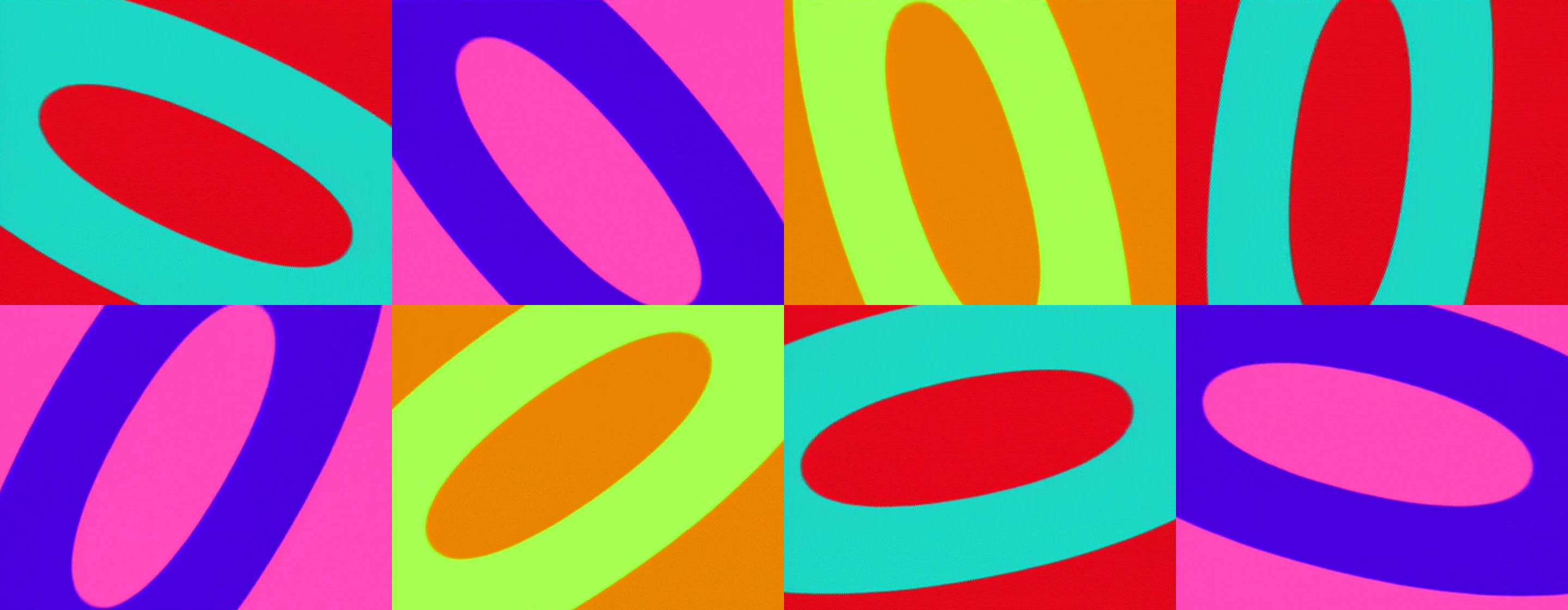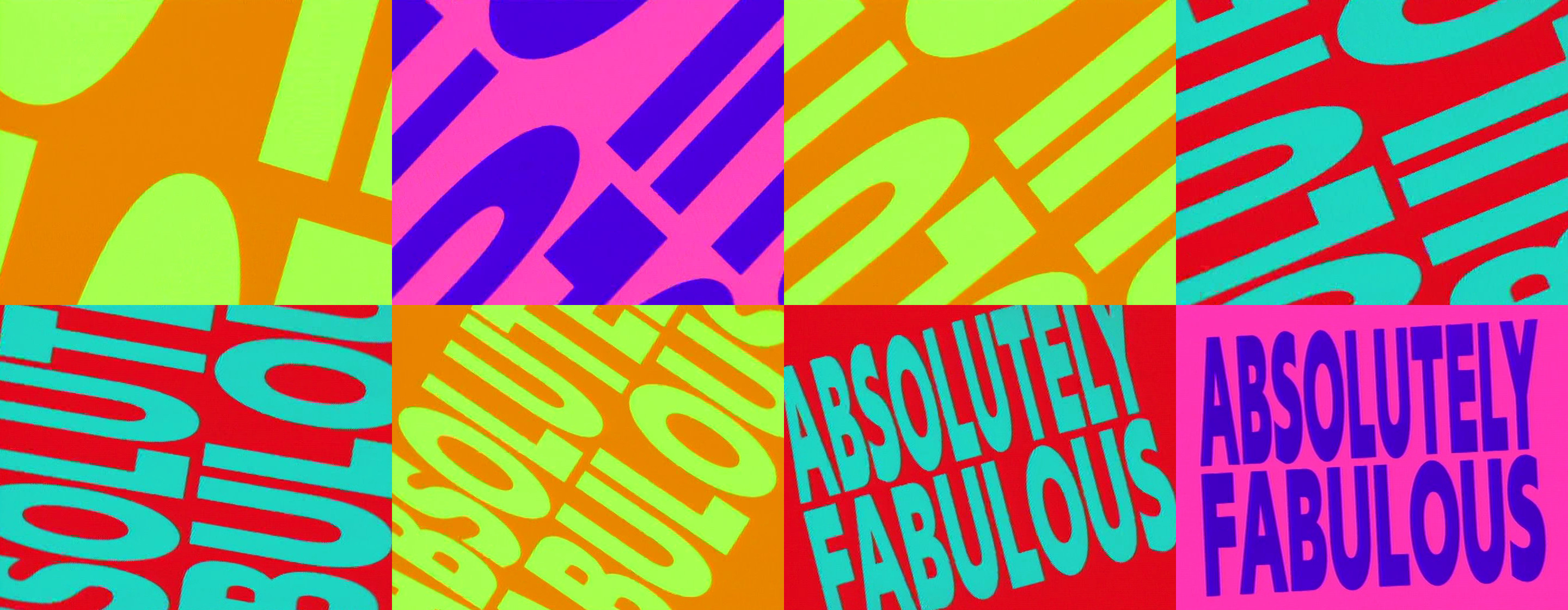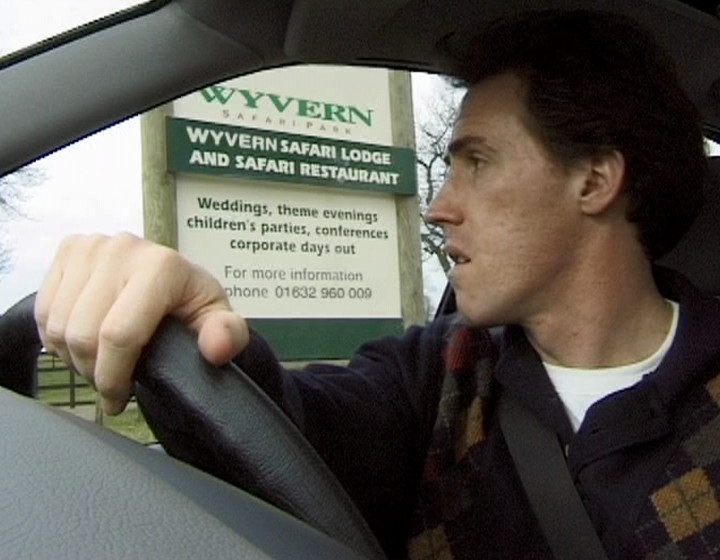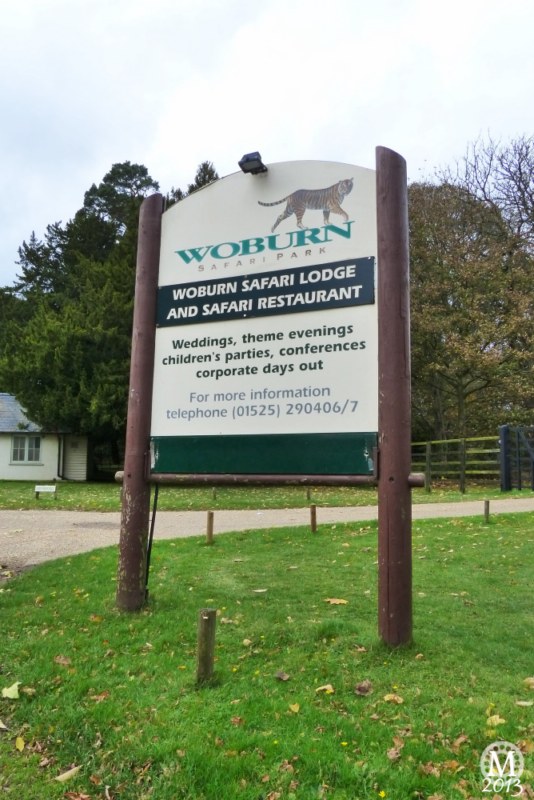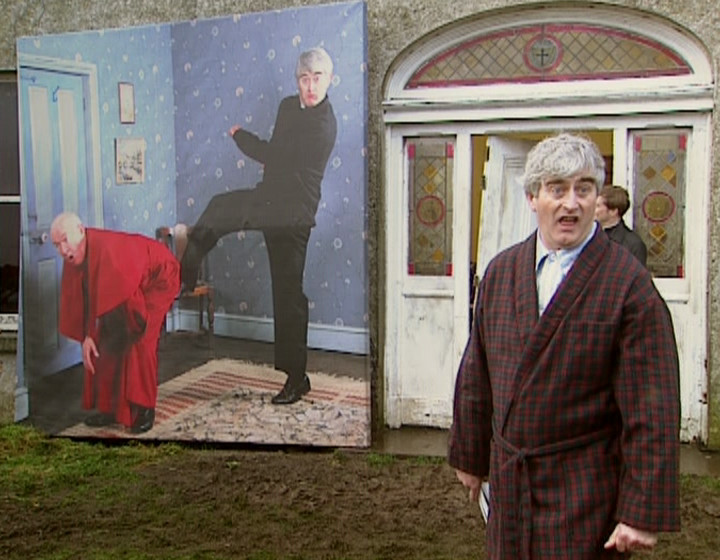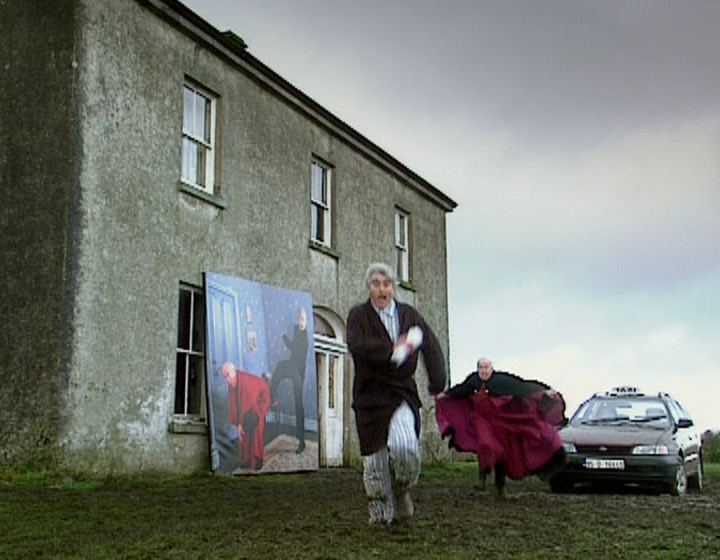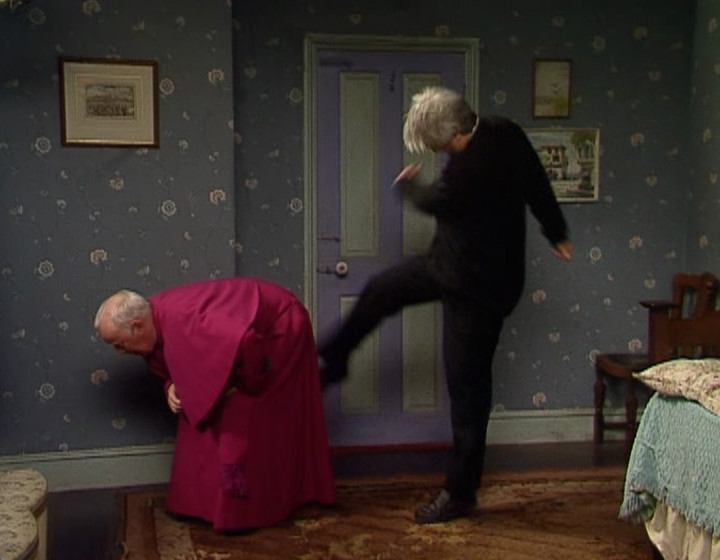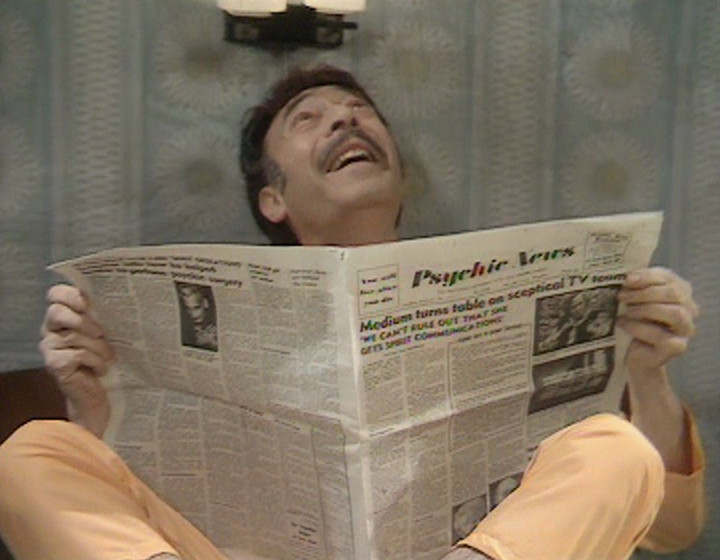As we’re in an Absolutely Fabulous mood at the moment, let’s watch the end credits of Episode 1.4, “Iso Tank”, broadcast on the 3rd December 1992. I promise you there’s a good reason.
The conversation starts off with the reuse of the “Yamishi’s new shop” material from the pilot, as detailed in my previous article. But the really interesting bit is right at the end:
PATSY: You want to hear a new joke, darling? You want to hear a new joke? It’s not in very good taste. The thing is this: you know Elizabeth Taylor? I hear that she is the new ride at Disney World.
So at the risk of frog-dissection, what does the above joke mean?
One element is obvious: a joke about Elizabeth Taylor’s endless marriages and affairs. (The kind of joke I feel a lot more comfortable with when it’s said by a woman.) But there is another thing in the mix here. Because a certain event took place on the 27th February 1992, which was reported in the LA Times the following day:
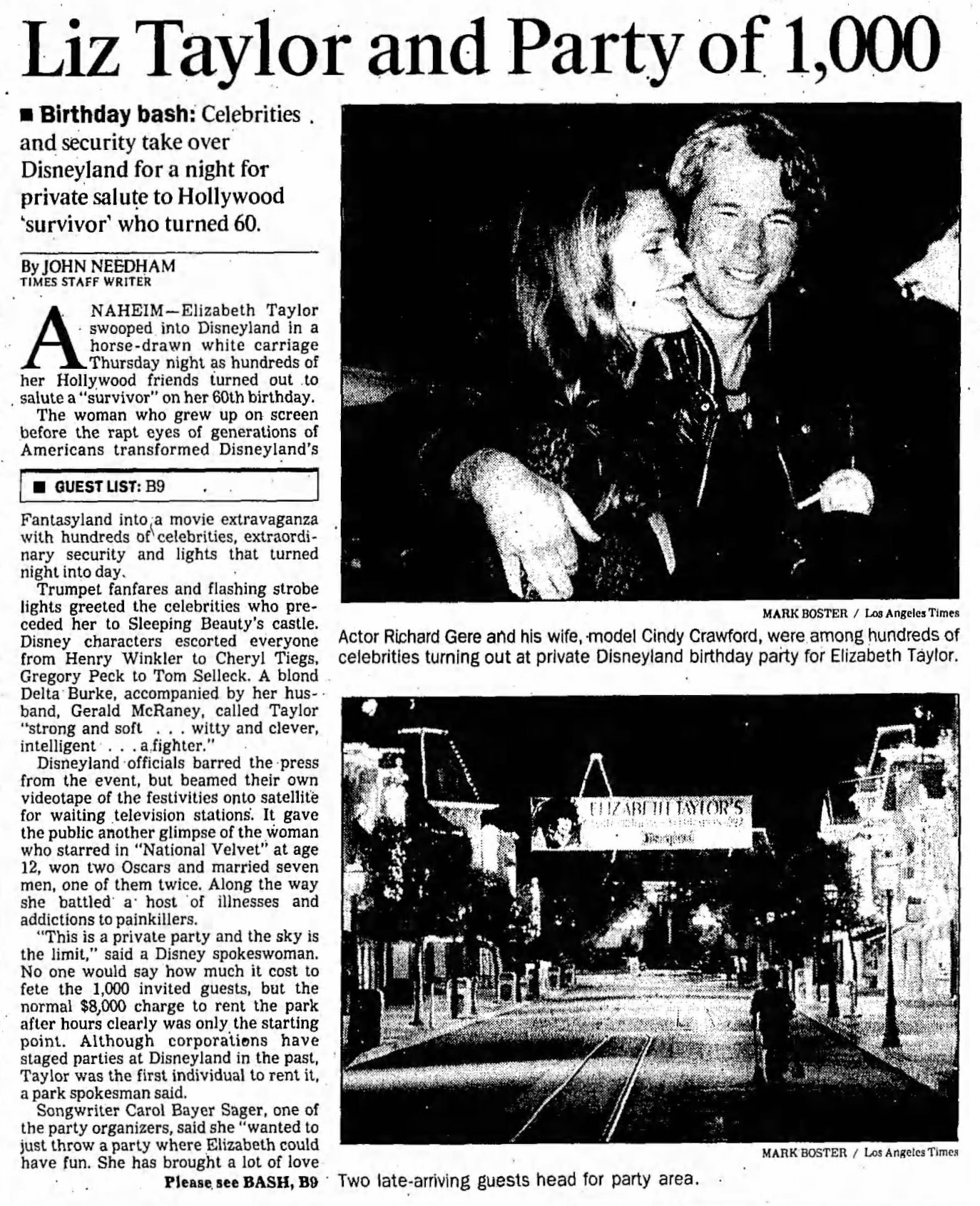
Elizabeth Taylor’s 60th birthday party took place at Disneyland. An event which captured people’s imagination so much, it was still talked about 25 years later. And all of a sudden, Patsy’s joke gains more resonance – the choice of Disney as opposed to anywhere else no longer feels quite as arbitrary.
Now, Patsy actually gets the location wrong, of course – she says Disney World, not Disneyland. It doesn’t matter; that’s exactly the kind of thing people get wrong in jokes anyway. And reading the above newspaper report, all of a sudden, the joke feels a little less cruel. If someone moves in circles where they can get Disneyland hired out for their 60th birthday party, Patsy’s remark feels like the definition of kicking upwards.
But there’s something even more amusing about all this, if we put the joke into its real-life context. When it finally aired in December 1992, nine months had passed since Elizabeth Taylor’s 60th birthday. But when was “Iso Tank” actually recorded?
Answer: the 4th March 1992. Exactly a week on from the party itself. It’s a genuinely topical gag… well, for the studio audience, anyway.
When Patsy said it was a “new joke”, she really meant it.

